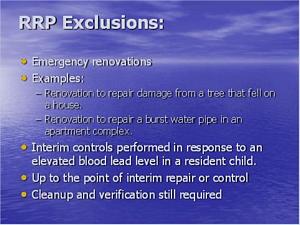In a letter dated 4/20/2010, the EPA announced that it does not intend to take enforcement actions against firms who applied for the required firm certification before April 22, 2010 and are just waiting for their paperwork.
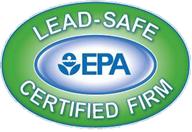 The RRP Rule requires that firms be certified with the EPA before offering or performing work that falls under the rule. This fact is clearly stated in the rule and further explained in the FAQ section of the EPA website. The rule also says that the EPA has up to 90 days to process firm applications. Apparently, even though many businesses will be required to follow the RRP rule in its entirety, the EPA can decide which part(s) of the rule they will follow, or not. In the letter, the EPA justifies not following the requirements of the RRP Rule in regards to the firm certification requirement as follows:
The RRP Rule requires that firms be certified with the EPA before offering or performing work that falls under the rule. This fact is clearly stated in the rule and further explained in the FAQ section of the EPA website. The rule also says that the EPA has up to 90 days to process firm applications. Apparently, even though many businesses will be required to follow the RRP rule in its entirety, the EPA can decide which part(s) of the rule they will follow, or not. In the letter, the EPA justifies not following the requirements of the RRP Rule in regards to the firm certification requirement as follows:
"The certification requirement is important to making sure that firms are protecting children and other residents while renovations are ongoing, but EPA does not wish to disrupt ongoing renovations for those firms that submitted applications on time."
The letter indicates that EPA expects to review all firm applications filed by April 22nd by June, although they did not specify by when in June.

 Looking for accurate information about the EPA RRP rule?
Looking for accurate information about the EPA RRP rule?  work practices and training requirements.
work practices and training requirements.
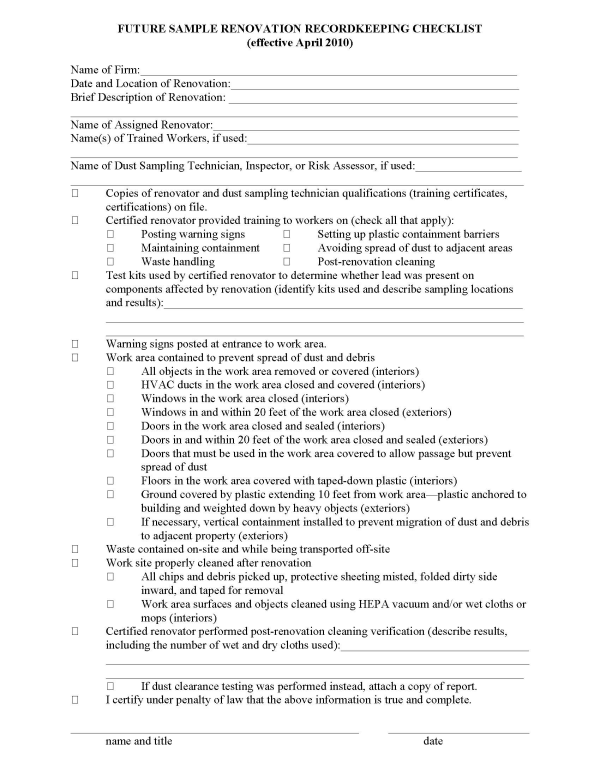 PA
PA Rhode Island administers their own RRP program. Here is an addition documentation consideration related to the renovation record keeping for those operating in RI:
Rhode Island administers their own RRP program. Here is an addition documentation consideration related to the renovation record keeping for those operating in RI: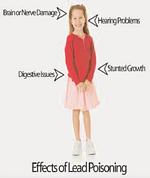 Note: If the home owner has removed all painted surfaces and or has already done all required demo, renovators should still be cautious. Just because all of the painted surfaces have been removed does not ensure that there is no lead dust still present in a work area. If the renovator spreads that dust while working, he or she could still be held liable for doing so. If demolition has been done by others prior to the start of work, it might be wise to have the area tested before you begin your work.
Note: If the home owner has removed all painted surfaces and or has already done all required demo, renovators should still be cautious. Just because all of the painted surfaces have been removed does not ensure that there is no lead dust still present in a work area. If the renovator spreads that dust while working, he or she could still be held liable for doing so. If demolition has been done by others prior to the start of work, it might be wise to have the area tested before you begin your work.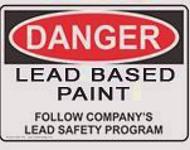 According to the Q&A area of the EPA's web site, before you can offer or do work on pre-1978 homes, you must be a Certified Firm (
According to the Q&A area of the EPA's web site, before you can offer or do work on pre-1978 homes, you must be a Certified Firm (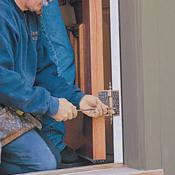 If you are a certified renovator trying to figure out innovative, efficient and time saving production methods to protect profits on EPA RRP related projects you might want to consider a dust room.
If you are a certified renovator trying to figure out innovative, efficient and time saving production methods to protect profits on EPA RRP related projects you might want to consider a dust room.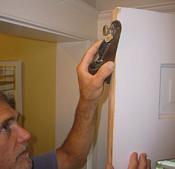
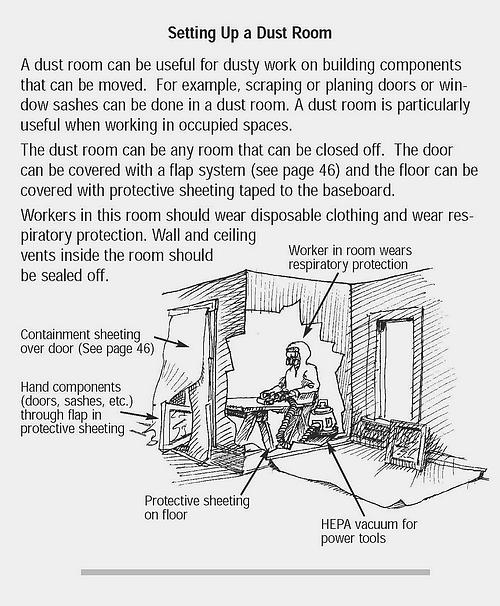
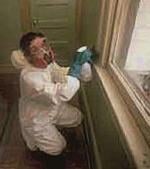 Many Certified Renovators, after taking the required EPA RRP certification class, leave with questions about respirators. The RRP rules are not specific about the need or requirement for workers to use respirators while performing work practices, but there are OSHA rules to consider. For information regarding OSHA requirements contractors can refer to the OSHA document titled
Many Certified Renovators, after taking the required EPA RRP certification class, leave with questions about respirators. The RRP rules are not specific about the need or requirement for workers to use respirators while performing work practices, but there are OSHA rules to consider. For information regarding OSHA requirements contractors can refer to the OSHA document titled 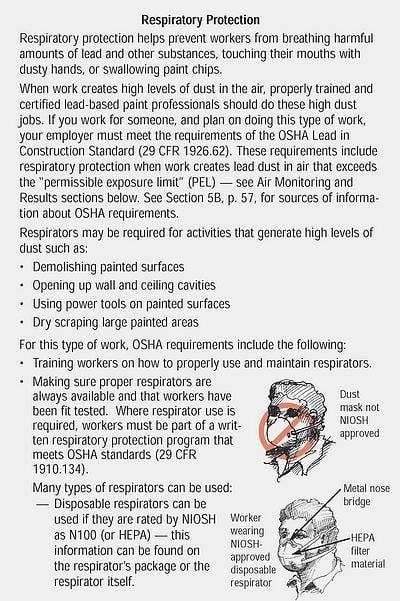
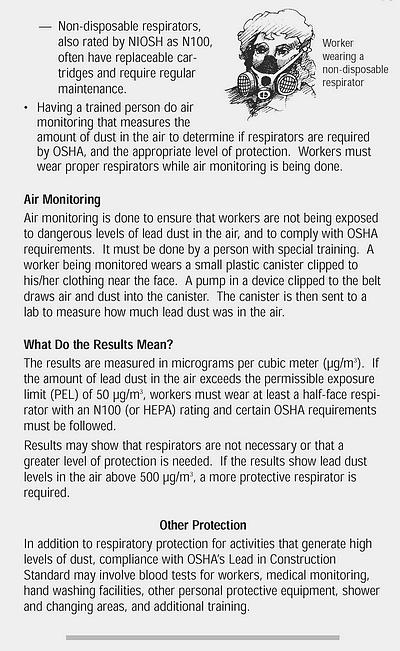

 sell the work, but the homeowner does not in any way have responsibility to only hire a certified firm. There is no consequence to the consumer for hiring someone who works illegally. If this is a challenge for you, it would be pointless to express your concerns to an EPA employee. They don't make the laws or rules. Rather, you should speak with your congressman. Congress was and is responsible for this rule, it's contents and the rule's lack of insight into the realities of implementation in the real world.
sell the work, but the homeowner does not in any way have responsibility to only hire a certified firm. There is no consequence to the consumer for hiring someone who works illegally. If this is a challenge for you, it would be pointless to express your concerns to an EPA employee. They don't make the laws or rules. Rather, you should speak with your congressman. Congress was and is responsible for this rule, it's contents and the rule's lack of insight into the realities of implementation in the real world.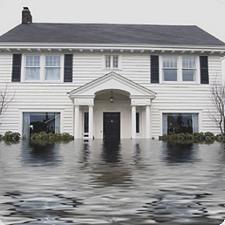 Insurance companies use detailed estimating programs to set the rates they will reimburse for repairs. When we go trying to fix up people's soggy basements and flooded first stories after this big wet one, can we assume that we are disturbing lead? And if so, are they going to want us to put up plastic and stuff amid all that soggy mess? And if so (which I doubt), are the insurance companies ready to pay the added cost of this?
Insurance companies use detailed estimating programs to set the rates they will reimburse for repairs. When we go trying to fix up people's soggy basements and flooded first stories after this big wet one, can we assume that we are disturbing lead? And if so, are they going to want us to put up plastic and stuff amid all that soggy mess? And if so (which I doubt), are the insurance companies ready to pay the added cost of this?